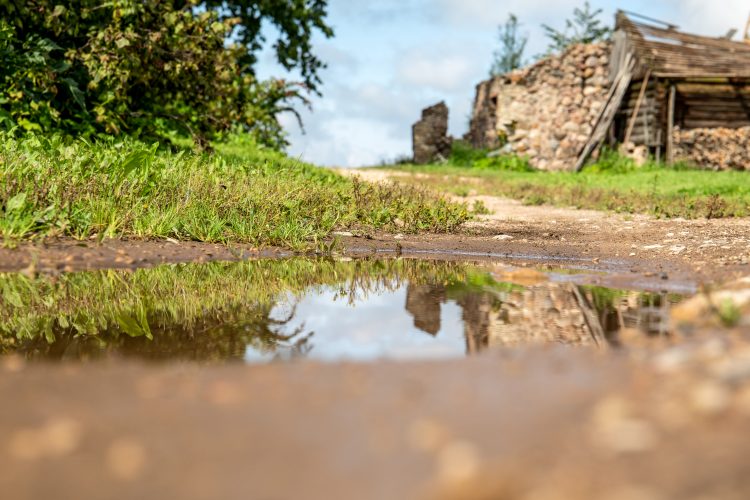Wildfires and Water Treatment

By: Adam Stephenson | Dec 06, 2021
When you read this title what images come to mind? Is it huge helicopters and fire trucks scooping tons of water from a nearby treatment system or reservoir to battle a blaze? Sadly, the connection between wildfires and water treatment is not a positive one. Wildfires are detrimental to water quality, water treatment systems, and infrastructure. In this article, we’ll explore exactly how wildfires negatively impact water treatment systems and water quality. We will also cover wildfire mitigation and prevention measures used to protect drinking water sources and water treatment systems.
Municipal Water Treatment and Infrastructure
The obvious detriment to water treatment infrastructure from wildfires is from the destruction of equipment. Fire melts electronics and burns buildings, tanks, and pipes. The water cannot physically make it to the treatment process or be distributed after being treated with damaged or destroyed infrastructure.
But some not so obvious and more detrimental impacts to the municipal treatment system can occur. The financial impact from having to buy water from an alternative source or increased cost in filtering wildlife runoff can be staggering. Rural small towns in particular face the choice between spending millions of dollars to try to filter turbid water or shutting off their intake and risking shortages in areas where water may already be scarce.
Water Quality
Dirty, turbid water with high nutrient loads and suspended sediment is common in runoff from burn scar or wildfire damaged areas. Wildfire runoff is often alkaline (pH > 9), in part because of its interactions with wood ash and dissolved minerals. Under these conditions, high ammonia and ammonium ion concentrations can cause acute ammonia toxicity in aquatic organisms, especially in headwater streams where these contaminants are not as diluted, as they become farther downstream. Even some of the fire retardant and suppression agents often release nutrients, including inorganic nitrogen and phosphorus, into source waters. As fires move closer to communities, burning synthetic materials from houses and other buildings can create toxic compounds that leach into water supplies. Another waterborne danger comes from chemical byproducts and heavy metals from burned structures.
Wildfire runoff entering source streams is full of dissolved organic matter (DOM). DOM creates problems for water treatment and ultimately, drinking water. DOM can cause off colorations and tastes in drinking water and serve as a substrate for unwanted microbial growth or a foulant of membranes and adsorption processes. Also, DOM can increase treatment costs and chemical demand levels, that is, the amount of added chemicals required to disinfect water and remove DOM. In addition, treatment efforts can introduce unintended side effects: Disinfection processes for DOM-contaminated water can form a variety of carcinogenic disinfection by-products (DBPs), such as chloroform, some of which are regulated by the EPA (Environmental Protection Agency).
Prevention and Mitigation
Water utilities should develop risk analysis and emergency response plans. These plans should include identifying alternative source waters, extensive and long-term postfire source water quality monitoring, and modifications in treatment processes and operations, such as using adsorbents and alternative oxidants that reduce taste and odor problems, remove specific contaminants. Conducting wildfire hazard assessments in watersheds was an important first step to reducing and mitigating the effects of wildfire. Drinking water utilities reported that collaboration with other drinking water systems, landowners, non-profit organizations, and local, state, and federal government agencies was a critical aspect of wildfire mitigation. Collaboration helped organizations conduct more effective and comprehensive wildfire mitigation activities, expand their knowledge base, and leverage financial resources. Respondents also commonly reported the installation of fire resilient materials and redundancy in their infrastructure.
Maintaining sufficient redundancy of drinking water infrastructure and sources affords drinking water utilities with the best protection against the detrimental effects of wildfires. Redundancy within the drinking water utility can help provide uninterrupted water service in the case of water quality impairment and damage to infrastructure.
From a landscape standpoint, prescribed fire is an economic management practice to reduce loads of forest litter and wildfire hazard. These low-severity fires reduce the quantity of DOM. Also, establishing firebreaks is another effective management strategy to limit the rapid spread of fire and reduce the size of burned areas. The most common activity reported by survey respondents is the management of grounds surrounding the facility. Management activities include removing debris, trees, or other fire-hazard materials and instituted high fire danger procedures such as smoking and fire bans.
Conclusion
As with many of the topics we’ve covered on this blog, collaboration and community involvement are key factors to aid in wildfire prevention and mitigation and protecting our shared water resource. We are stronger together and fire knows no boundaries.

